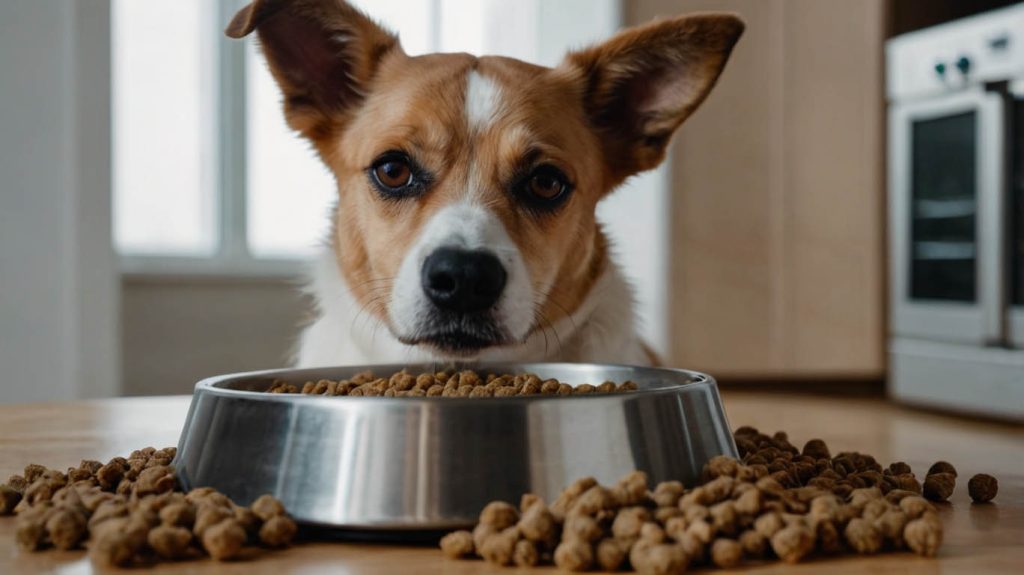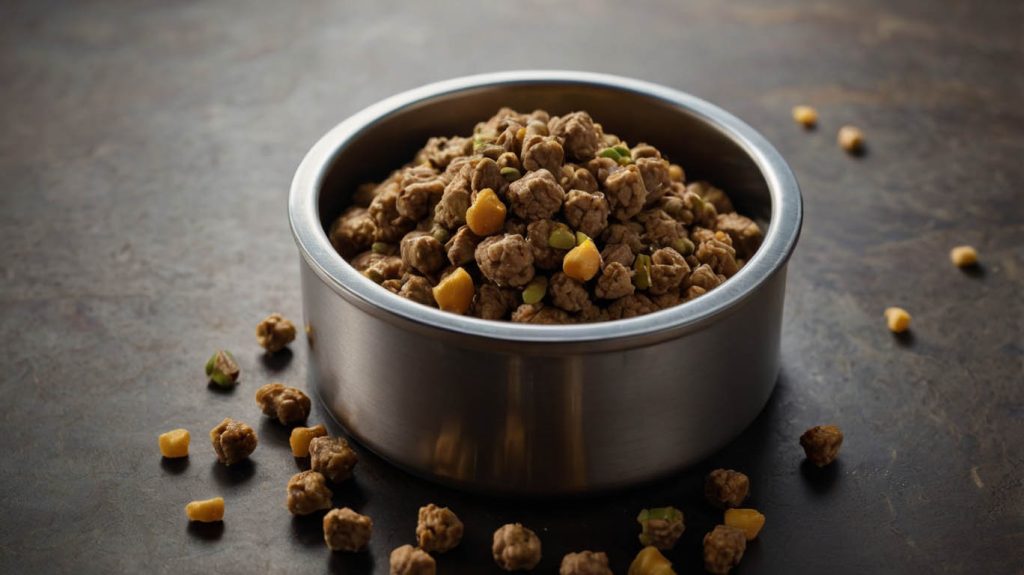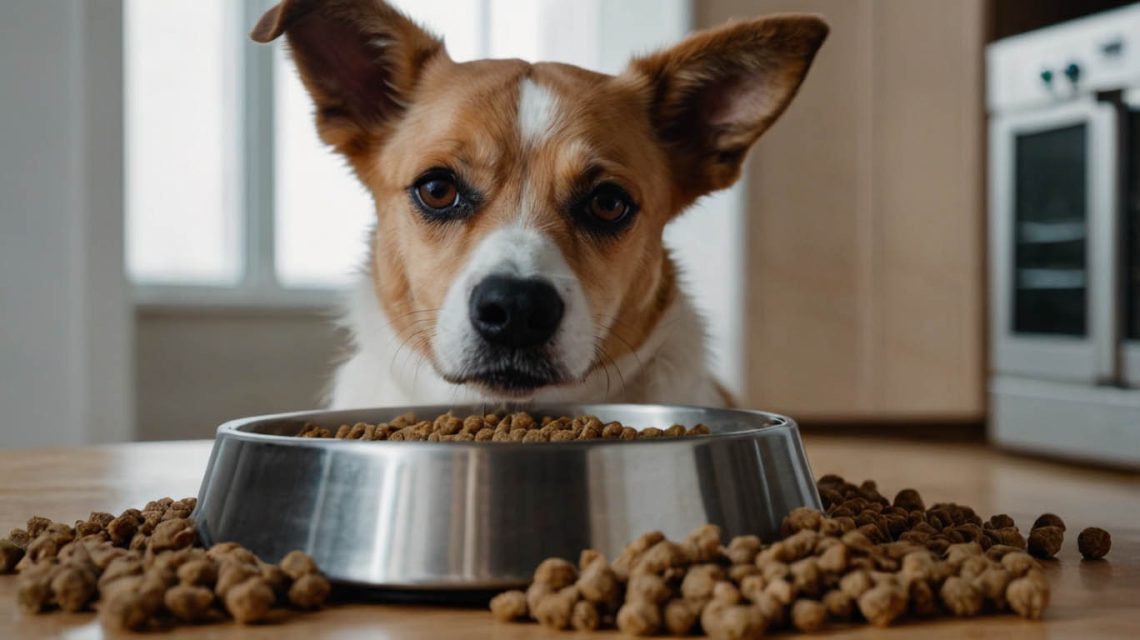Best Dog Kibble for Picky Eaters: The Ultimate Guide to Winning Mealtime
David stared at the nearly full food bowl with a familiar sense of defeat. His French Bulldog, Bella, had taken one sniff of the new, expensive kibble, looked up at him with an expression of utter disdain, and waddled over to her bed. This was the fifth brand he had tried in three months. Every meal had become a stressful negotiation, filled with coaxing, adding toppers, and ultimately, throwing away perfectly good food. He felt worried and frustrated, constantly asking himself the same question: how do I find the best dog kibble for picky eaters?
David’s struggle is one that resonates deeply with countless dog owners. Having a picky eater is more than just an inconvenience; it’s a source of constant worry about their health and nutrition. The endless wall of dog food options at the pet store, each promising to be the most delicious, only adds to the confusion.
Consequently, this definitive guide is designed to be your lifeline. We won’t just recommend brands; we will explore the psychology behind picky eating, teach you how to decipher an ingredient label like a pro, and provide a holistic strategy to end the mealtime wars for good. Therefore, you can confidently choose the best dog kibble for picky eaters and bring joy back to the food bowl.
First, Why Is Your Dog a Picky Eater?
Before you can solve the problem, you must understand its source. A dog’s refusal to eat is often a form of communication.

The Most Important First Step: Rule Out Medical Issues
This is non-negotiable. A sudden onset of pickiness or a long-term refusal to eat can be a sign of an underlying health problem. Common culprits include:
- Dental Pain: A sore tooth, cracked molar, or inflamed gums can make chewing kibble painful.
- Gastrointestinal Discomfort: Your dog could be suffering from food sensitivities, allergies, or an illness that causes nausea.
- Other Internal Issues: More serious conditions can also manifest as a loss of appetite.
Before you spend another dollar on a new bag of food, schedule a thorough check-up with your veterinarian. Once they give your dog a clean bill of health, you can confidently address the dietary and behavioral aspects of their pickiness.
The Power of Scent and Flavor for a Discerning Palate
A dog’s sense of smell is their primary way of experiencing the world, and it is thousands of times more sensitive than ours. For a dog, the aroma of their food is paramount. A bland, stale, or uninteresting smell will almost always be rejected, no matter how nutritious the contents. This is a critical factor when searching for the best dog kibble for picky eaters.
The Human Factor: Are We Creating Picky Eaters?
Our love for our dogs can sometimes lead to habits that encourage pickiness.
- The “Table Scrap” Trap: Sharing flavorful human food like chicken, cheese, or steak makes their own kibble seem incredibly dull in comparison.
- The Treat Overload: If your dog fills up on high-calorie treats between meals, they simply won’t be hungry for their actual dinner.
- The Topper Power Struggle: If your dog learns that refusing their plain kibble will earn them a delicious topper of wet food or broth, they will hold out every single time. They are training you!

What to Look For in the Best Dog Kibble for Picky Eaters
Once you have a healthy dog, it’s time to focus on the food itself. Certain features make a kibble irresistible to even the most discerning canine critic.
High-Quality, Meat-First Ingredients Are a Must
The ingredient list is your most powerful tool. The best dog kibble for picky eaters will always list a named, whole meat source as the very first ingredient. Look for terms like “deboned chicken,” “lamb,” “beef,” or “salmon.” Dogs are instinctively drawn to the scent and taste of real animal protein. Avoid foods that start with corn, wheat, soy, or vague terms like “meat and bone meal.”
The Game-Changer: Kibble with a Freeze-Dried Raw Coating
This innovation has been a lifesaver for owners of picky dogs. Some of the highest-quality kibbles are now coated with a layer of crushed, freeze-dried raw meat.
- How it works: The freeze-drying process preserves the potent, natural aroma and flavor of the raw meat. When you pour it into the bowl, your dog gets an intoxicating, protein-rich scent that triggers their natural feeding instincts. This simple feature transforms a standard kibble into a high-value meal.
The Role of Healthy Fats and High Protein Content
Fat and protein are the primary drivers of palatability (aka, taste) for dogs. Look for a food with a robust protein percentage (ideally 25% or higher) and healthy, named fat sources like “chicken fat” or “salmon oil.” These ingredients not only provide crucial energy but also make the kibble smell and taste much better.
Top-Tier Options for the Best Dog Kibble for Picky Eaters
While every dog is an individual, these categories of kibble have a proven track record of success with even the most stubborn eaters.
Category 1: Freeze-Dried Raw-Coated Kibble
This is often the best place to start. It offers the perfect marriage of convenience and high palatability.
- What to look for: Brands that highlight their “raw coating” or “raw-infused” recipes. Examples include Stella & Chewy’s Raw Coated Kibble and Instinct Raw Boost, which includes whole pieces of freeze-dried raw meat.
Category 2: High-Protein, Meat-Dense Formulas
These foods focus on packing in as much high-quality animal protein as possible, making them naturally aromatic and delicious to dogs.
- What to look for: Brands that use a “biologically appropriate” or “ancestral diet” philosophy. Check the ingredient list for multiple animal sources at the top. Examples include Orijen and Acana.
Category 3: Limited Ingredient Diets (L.I.D.)
Sometimes, a dog is picky because an ingredient is causing low-grade stomach upset or an allergic reaction. A simpler formula can solve this. This is often the best dog kibble for picky eaters who also have sensitive stomachs.
- What to look for: Foods with a single, novel protein source (like duck, venison, or fish) and a minimal number of other ingredients. Examples include Canidae PURE and Natural Balance L.I.D.
Beyond the Bowl: Proven Strategies to Beat Pickiness
Switching the food is just one part of the solution. Changing your mealtime habits is equally important.
The Magic of Meal Toppers (Used Strategically)
A small, flavorful topper can entice your dog to eat. The key is to mix it in so they eat the whole meal, not just lick the good stuff off the top.
- Great Topper Ideas: A spoonful of high-quality wet food, a drizzle of warm, no-salt-added bone broth, a sprinkle of crushed freeze-dried meat, or even just a bit of warm water to enhance the kibble’s natural aroma.
The “Tough Love” 15-Minute Rule
This behavioral technique is incredibly effective for healthy dogs.
- Put down the food bowl at a scheduled mealtime.
- Walk away and give your dog 15 minutes to eat.
- If they haven’t eaten it, calmly pick up the bowl. Do not coax, plead, or offer anything else.
- Offer the same meal again at the next scheduled feeding time.
This quickly teaches your dog that mealtimes are not a negotiation. It may feel difficult for a day or two, but it breaks the cycle of them holding out for something better.
A Case Study Resolved: How David and Bella Won Mealtime
Let’s return to David and his picky Frenchie, Bella. After a vet visit ruled out any health issues, David took a new approach. He chose a high-quality, freeze-dried raw-coated kibble with salmon as the first ingredient, knowing the strong fishy scent would be hard to resist.
He then implemented the 15-minute rule. The first evening, Bella sniffed the bowl and walked away. David, heart in his throat, picked it up after 15 minutes. The next morning, he put the bowl down again. This time, Bella ate the entire meal eagerly. He had found the best dog kibble for picky eaters, but more importantly, he had combined it with a strategy that put an end to the power struggle.
The Final Verdict: A Two-Part Solution for Picky Eaters
Finding the best dog kibble for picky eaters is a journey of two halves: selecting a high-quality, palatable, meat-first food and implementing a structured, consistent feeding routine. It begins with a vet check and ends with peaceful, happy mealtimes for both you and your dog.
Don’t give up on your picky eater! Consult your veterinarian, choose a food based on aroma and high-quality ingredients, and commit to a new feeding strategy. Share your own success stories and tips in the comments below!


